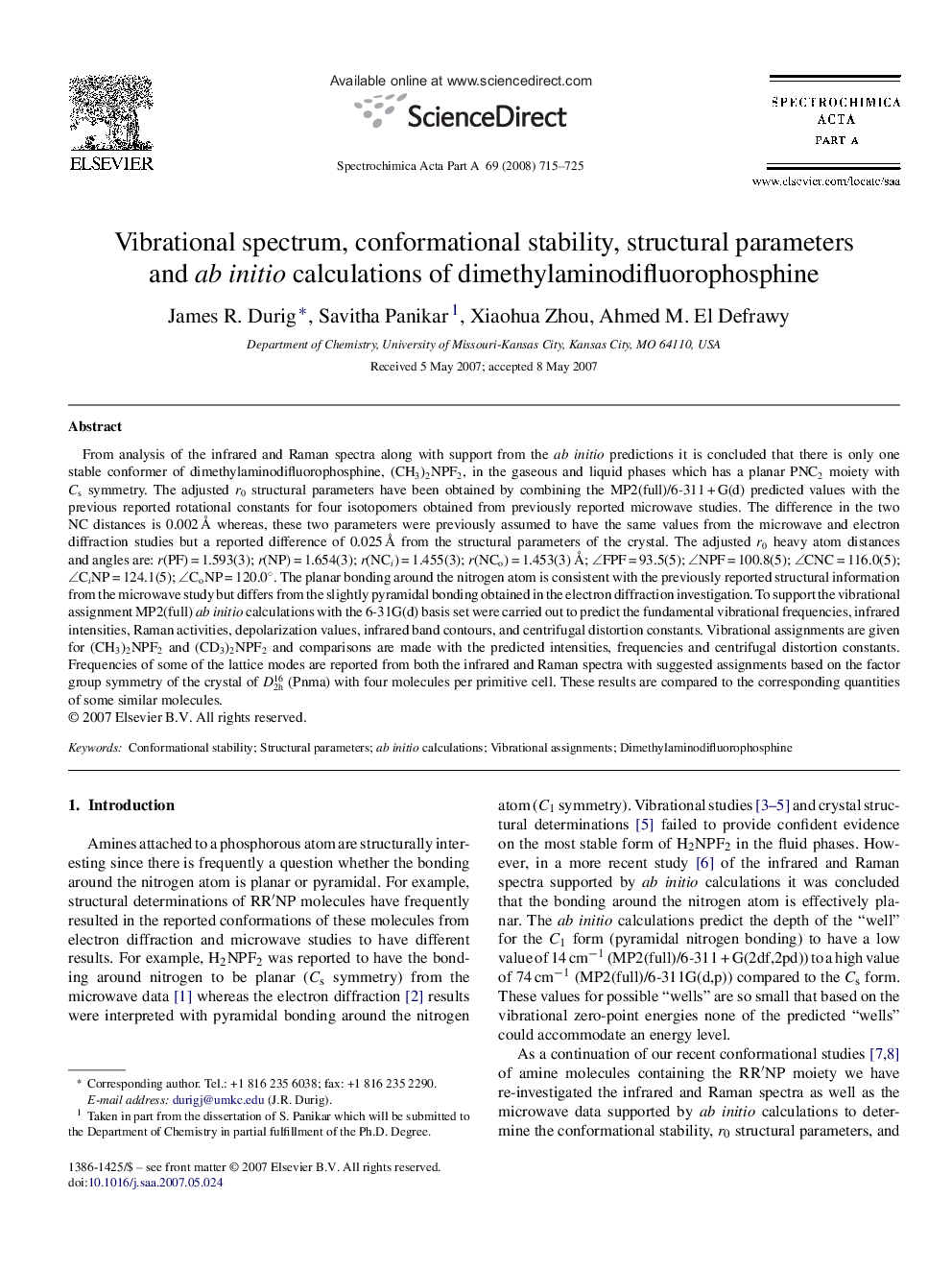| Article ID | Journal | Published Year | Pages | File Type |
|---|---|---|---|---|
| 1234586 | Spectrochimica Acta Part A: Molecular and Biomolecular Spectroscopy | 2008 | 11 Pages |
Abstract
From analysis of the infrared and Raman spectra along with support from the ab initio predictions it is concluded that there is only one stable conformer of dimethylaminodifluorophosphine, (CH3)2NPF2, in the gaseous and liquid phases which has a planar PNC2 moiety with Cs symmetry. The adjusted r0 structural parameters have been obtained by combining the MP2(full)/6-311Â +Â G(d) predicted values with the previous reported rotational constants for four isotopomers obtained from previously reported microwave studies. The difference in the two NC distances is 0.002Â Ã
whereas, these two parameters were previously assumed to have the same values from the microwave and electron diffraction studies but a reported difference of 0.025Â Ã
from the structural parameters of the crystal. The adjusted r0 heavy atom distances and angles are: r(PF)Â =Â 1.593(3); r(NP)Â =Â 1.654(3); r(NCi)Â =Â 1.455(3); r(NCo)Â =Â 1.453(3) Ã
; â FPF = 93.5(5); â NPF = 100.8(5); â CNC = 116.0(5); â CiNP = 124.1(5); â CoNP = 120.0°. The planar bonding around the nitrogen atom is consistent with the previously reported structural information from the microwave study but differs from the slightly pyramidal bonding obtained in the electron diffraction investigation. To support the vibrational assignment MP2(full) ab initio calculations with the 6-31G(d) basis set were carried out to predict the fundamental vibrational frequencies, infrared intensities, Raman activities, depolarization values, infrared band contours, and centrifugal distortion constants. Vibrational assignments are given for (CH3)2NPF2 and (CD3)2NPF2 and comparisons are made with the predicted intensities, frequencies and centrifugal distortion constants. Frequencies of some of the lattice modes are reported from both the infrared and Raman spectra with suggested assignments based on the factor group symmetry of the crystal of D2h16 (Pnma) with four molecules per primitive cell. These results are compared to the corresponding quantities of some similar molecules.
Related Topics
Physical Sciences and Engineering
Chemistry
Analytical Chemistry
Authors
James R. Durig, Savitha Panikar, Xiaohua Zhou, Ahmed M. El Defrawy,
